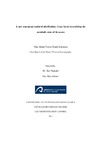Identificador persistente para citar o vincular este elemento:
https://accedacris.ulpgc.es/jspui/handle/10553/10885
| Campo DC | Valor | idioma |
|---|---|---|
| dc.contributor.advisor | Gómez, May | - |
| dc.contributor.advisor | Packard, Theodore T. | - |
| dc.contributor.author | Tames-Espinosa, Mayte | - |
| dc.date.accessioned | 2013-10-29T08:48:28Z | - |
| dc.date.accessioned | 2018-05-15T10:47:33Z | - |
| dc.date.available | 2013-10-29T08:48:28Z | - |
| dc.date.available | 2018-05-15T10:47:33Z | - |
| dc.date.issued | 2013 | en_US |
| dc.identifier.uri | https://accedacris.ulpgc.es/handle/10553/10885 | - |
| dc.description | Máster en Oceanografía | en_US |
| dc.description.abstract | Until the last decades, nitrification has been considered to occur only in the dark ocean. However, recent studies report nitrification within the euphotic zone, varying with differences in light-sensitivity that favor different groups and strains within the nitrifying community. Here we present a new qualitative conceptual model that not only considers the light as a key factor of the distribution of the nitrifiers, but also stratification, the oligotrophic or eutrophic conditions, and even the ppO. This new conceptual model has been developed for the open ocean. Other conditions that involve changes in the community, such as a estuarine zone, with specific pH, temperature, salinity and nutrients gradients, require modifications that are also considered in this study. Integrating the results from the new studies of nitrification, we show that the relative nitrification distribution varies due to the environmental factors, and, occurs within the euphotic zone at higher rates than it was previously thought. This euphotic behavior of nitrification has a direct impact on the metabolic balance of the ocean because it fixes carbon and consumes O. Accordingly, it now has to be considered in interpreting measurements of autotrophy and heterotrophy (particularly those based on ppO analysis). Moreover, nitrification within the euphotic zone, along with nitrogen fixation, affects the new and regenerated production classic concepts and measurements. They have to be redefined in line with the changes that have been made with the classic f-ratio, all because of nitrification in the upper ocean. We review the knowledge of nitrification, its community behavior, and the changes in environmental factors that have an influence on it. We examine how the variability in nitrification impacts the N and C-cycles and how it changes the basic concepts used in the understanding of the C-flux. This new level of understanding will be especially relevant in the current global climate change scenario. | en_US |
| dc.language | eng | en_US |
| dc.subject | 251001 Oceanografía biológica | en_US |
| dc.subject.other | Nitrification | en_US |
| dc.subject.other | Carbon cycle | en_US |
| dc.subject.other | Carbon fixation | en_US |
| dc.subject.other | Metabolic state of the ocean | en_US |
| dc.subject.other | Chemoautotrophy | en_US |
| dc.title | A new conceptual model of nitrification: A key factor in resolving the metabolic state of the ocean | en_US |
| dc.type | info:eu-repo/semantics/masterThesis | en_US |
| dc.type | MasterThesis | en_US |
| dc.compliance.driver | 1 | es |
| dc.contributor.facultad | Facultad de Ciencias del Mar | en_US |
| dc.identifier.crisid | 36330 | - |
| dc.investigacion | Ciencias | en_US |
| dc.rights.accessrights | info:eu-repo/semantics/openAccess | es |
| dc.type2 | Trabajo final de máster | en_US |
| dc.description.notas | Máster en Oceanografía ; 2013 | en_US |
| dc.utils.revision | Sí | en_US |
| dc.identifier.ulpgc | Sí | en_US |
| dc.contributor.buulpgc | BU-BAS | en_US |
| item.fulltext | Con texto completo | - |
| item.grantfulltext | open | - |
| crisitem.author.orcid | 0000-0003-0607-5321 | - |
| crisitem.author.fullName | Tames Espinosa, Maria Teresa | - |
| crisitem.advisor.dept | GIR ECOAQUA: Ecofisiología de Organismos Marinos | - |
| crisitem.advisor.dept | IU de Investigación en Acuicultura Sostenible y Ec | - |
| crisitem.advisor.dept | Departamento de Biología | - |
| crisitem.advisor.dept | GIR ECOAQUA: Ecofisiología de Organismos Marinos | - |
| crisitem.advisor.dept | IU de Investigación en Acuicultura Sostenible y Ec | - |
| Colección: | Trabajo final de máster Ponencias | |
Visitas
175
actualizado el 17-may-2025
Descargas
50
actualizado el 17-may-2025
Google ScholarTM
Verifica
Comparte
Exporta metadatos
Este elemento está sujeto a una licencia Licencia Creative Commons

